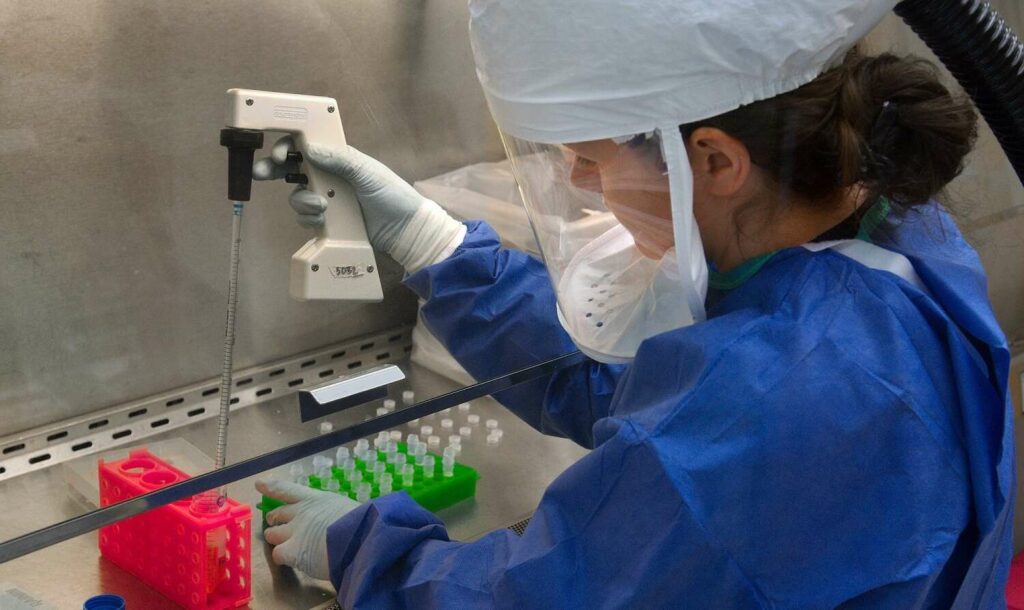Karen McCusker, Associate Director in Marketing at Simbec-Orion, speaks to Dr Debra Davies and Romillie Cruz at Simbec-Orion on their experience of being women in science.
I’m not sure where my interest in medicine came from or when it started. I often wonder if it was something to do with being diagnosed with asthma as a toddler and spending weeks at a time in hospital throughout my childhood that sparked something.
When, aged around 9 or 10, I was given personal projects as school assignments, I inevitably chose a medicine-related topic. I can still remember my first biology class at high school, my first lesson on a Friday morning, and my first biology teacher. It’s always her that I reference if anyone asks me about teachers who strongly influenced me. My school’s headteacher, also a woman, held a PhD in Chemistry and so all the sciences were a strong focus in the curriculum, and open to everyone.
As I’m writing this, I’ve come to realise that growing up, I was surrounded by women with scientific backgrounds, from the family doctors to the teachers and lecturers I encountered throughout my education. Perhaps it’s because medicine is the science of human physiology, the altogether “softer” science of caring for people that makes it attractive to women. If my passion had been for thermodynamics or quantum mechanics, I would have been in the minority.
Thinking about my experience made me wonder if others in my position had lived the same journey. How did the female scientists I know get where they are today? To answer this, I connected with two of my Simbec-Orion colleagues to get their perspectives on women in science. Dr Debra Davies, Innovation and Development Lead, and Romillie Cruz, M.D. Head, Medical Clinical Development/ Medical Director, at Simbec-Orion.
Did you have a role model that influenced your decision to work in science or, if not, why did you choose a career in science?
DD: From a young age I was always interested in science and there have been many role models who have influenced my science progression through my education and life journey. My science teachers were very enthusiastic, this primarily focused my interest and I aspired to become a biology teacher.
However, during the final stages of selecting a university course, there was a glut of teachers graduating and I was advised to change direction. At the time forensics and working within a hospital laboratory environment were up-and-coming career paths and hence, I decided to pursue biochemistry as an alternative option.
RC: I did not have an individual role model, but what attracted me to science was the potential to be part of an initiative that would help heal or cure people, so I got into medicine. Initially, it was about looking after patients – especially paediatric patients; being an instrument for them to get well and at the same time be able to help their parents and family to understand what their child is going through.
This eventually evolved into clinical research and the passion to be part of a team searching for new treatments for different indications. My role helps make sure this is done well, with patients’ safety as a priority, while new technology and new drugs are being developed to offer new hope for our patients.
How did you come to work in your specific field?
DD: During my degree, I was fortunate enough to secure a vacation job working within the analytical laboratory at the facility that is now Simbec-Orion. This experience first introduced me to the wonders of chromatography and the passion which was shown by the scientists in supporting clinical trials cemented my interest in the field of analytical chemistry.
Whilst I was completing my PhD, clinical trial testing was on the increase, and the laboratory at Simbec-Orion (Simbec Research as it was then) was undergoing expansion. With the analytical experience that I had gained through my PhD and my previous work experience, I secured a full-time position within the laboratories.
Although my primary role was to support chromatography, there were several other disciplines available, such as safety testing and immunoassay which, in line with my biochemistry background and the excellent mentoring given by my colleagues, I was also able to embrace and expand my knowledge during my progression within the laboratories.
RC: For me, it started when I took part in clinical trials while I was doing my practice and seeing patients in the clinic. It took a while for me to fully move into clinical research, but the realisation that being a doctor goes beyond seeing patients in the clinic was what made me move.
I saw how my experience talking to and treating patients could contribute and provide medical input into how clinical trials can be more patient sensitive (or patient centred as we say). Being part of clinical trials early on in my practice gave me a view of how crucially important the processes and roles of each function in a study team are in the conduct and success of the trial.
Have you ever felt there was inequality in opportunities for you as a woman in science?
DD: Although there was never any inequality in the opportunities presented within the analytical roles within the laboratory environment, it was a different story when it came to expansion into management roles within the company. There was a glass ceiling with all but one of the management structures being male dominated.
RC: More and more women are making their mark in the scientific field, and this represents a move towards a balanced representation of gender. What we should strive for is to give women from developing countries opportunities to realise their dreams to excel in science. This could be done through mentorship and coaching from experienced women in science.
Do you think that gender inequality in science has changed in recent years?
DD: This has completely changed in recent years, with new management and change in attitude focused on the “right person for the job” and not their gender. This allowed me the opportunity to move into a laboratory management role. The new approach has led to a complete turnaround, as more than half of senior leadership roles within the company are now women.
How do you think Simbec-Orion benefits from having women in leadership roles?
DD: From my experience within Simbec-Orion, having women in leadership has helped change the team environment from one focusing mainly on task completion and power building to one which has promoted more cooperative teamwork across the organisation, whilst still accomplishing effective solutions.
Another benefit is that having a greater gender diversity demonstrates that, providing an individual has the appropriate experience, the opportunities for progression are open irrespective of gender and enable staff to realise their potential.
RC: Having women leaders in the company is key to providing balance in the diversity of views and opinions. I think that having women in leadership roles in our company also brings the advantage in terms of utilising our soft skills or emotional intelligence. On top of experience, technical skills, and knowledge of the job at hand, emotional intelligence is key, not only when it comes to communication and managing the team, but also in making sure we retain talents in our team.
I’m grateful that I was able to follow my own path, easily building a career in science. And I’m thankful that the experience of my colleagues matches mine, but you don’t have to go too far back to realise that the women who came before us and forged the way faced a constant uphill battle.
Notable women in science
Some notable women in science include:
- Rosalind Franklin’s work in x-ray crystallography revealed the double helix structure of DNA which was central to the Nobel Prize-winning work of Watson and Crick. She received no credit for the discovery until after her death.
- Dorothy Hodgkin was born in 1910 and attended a state school in England where only boys were allowed to study chemistry. She fought against this ban and went on to study chemistry at Oxford University, obtained her PhD at Cambridge, and made her mark researching the structures of penicillin and insulin. This work was vital to our ability to synthesise these life-saving treatments on an industrial scale.
- Katherine Johnson, Dorothy Vaughan, and Mary Jackson were three human computers whose work in astrophysics was featured in the 2016 film, Hidden Figures. It was Katherine’s work that, quite literally, launched man into space, but until her story was told very few people were aware of how important she was in the US space program.
The list of women’s scientific achievements could go on for pages, yet an internet search for the top 100 scientists provides overwhelmingly male results. As women in science, we still have a very long way to go, but as we have repeatedly shown over the decades, the sky is the limit.





